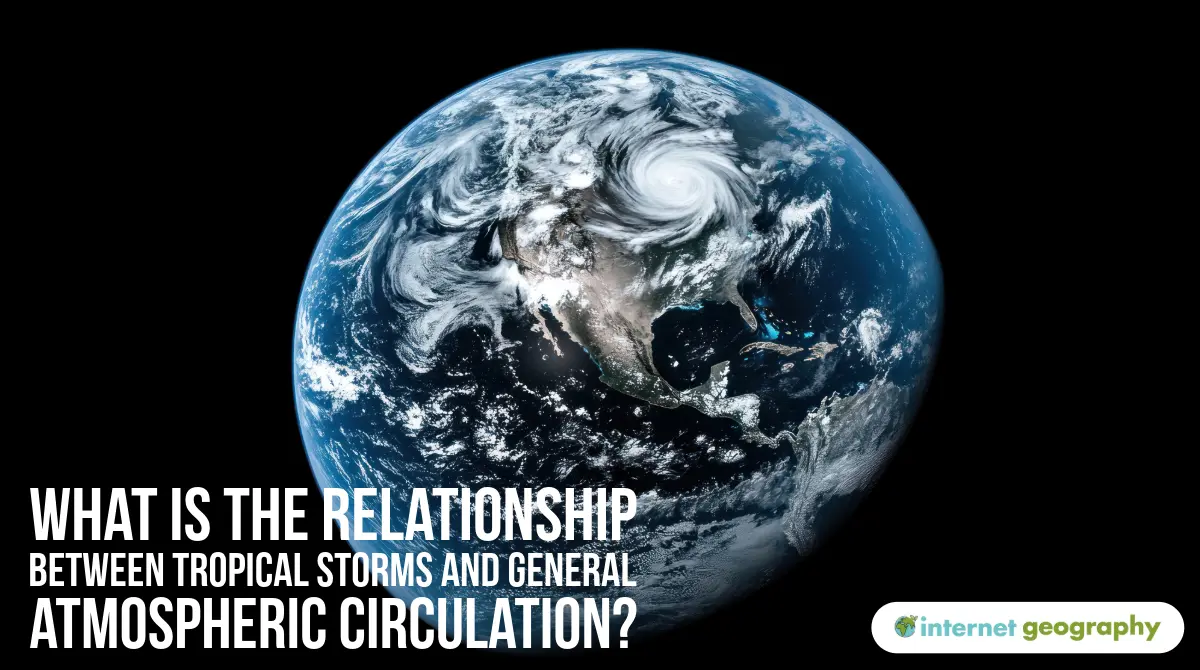What is the relationship between tropical storms and general atmospheric circulation?
What is global atmospheric circulation?
The Earth is heated unevenly by the Sun. Areas near the equator get more direct sunlight and are warmer, while the poles are much colder. This uneven heating sets up global atmospheric circulation – a system of wind patterns that move heat around the Earth.
This circulation is made up of three primary cells in each hemisphere:
- Hadley Cell – from the equator to about 30° north and south
- Ferrel Cell – from 30° to 60°
- Polar Cell – from 60° to the poles
Air rises at the equator (low pressure) and sinks around 30° (high pressure), then moves along the surface to complete each cell.
Where do tropical storms form?
Tropical storms (also called hurricanes, cyclones or typhoons) only form in specific conditions, usually:
- Between 5° and 30° north and south of the equator
- Over warm oceans (at least 26.5°C)
- Where the Coriolis effect is strong enough to cause rotation
They don’t form directly at the equator because the Coriolis effect is too weak there.
How is this linked to global circulation?
The Hadley Cell plays a crucial role in the formation of tropical storms. Here’s how:
- At the equator, warm air rises, creating low pressure and resulting in abundant rainfall.
- As the air moves away from the equator (towards 5°–30°), it starts to sink – this is where many tropical storms form.
- These zones have the right conditions: warm sea temperatures, low pressure, and rotating winds.
- The trade winds (part of the Hadley Cell) help move the storms westwards across the tropics.

